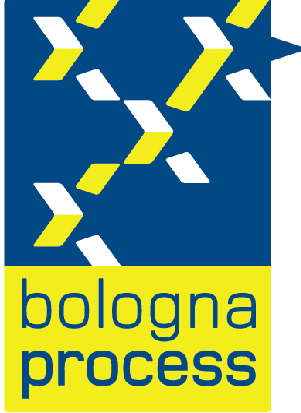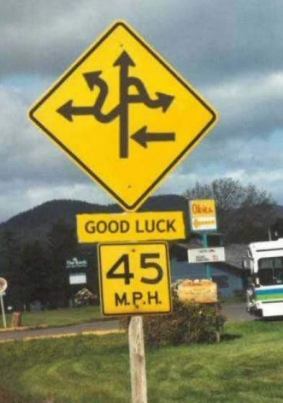Seven Rules of Thumb for Adaptive Management – what do you think?
Adaptive Management (aka Doing Development Differently, Thinking and Working Politically) seems to be flavour of the month, at least in my weird bubble of a world, so the next week is going to feature a series of posts on different aspects of what looks like a pretty important ‘movement’
First up, at one of the sessions at the Bologna workshop that I wrote about recently, we tried to identify some ‘rules of  thumb’ for those wishing to make adaptive management approaches a core part of their organization. The fact that the workshop mainly involved people involved in the nitty gritty of monitoring, evaluation and learning in a range of INGOs and aid donors gave this a particularly practical angle. We tried to avoid ending up with a load of questions (the usual end point of these conversations). We consciously pursued ‘rules of thumb’ (which some of the group called ‘principles’, while the pointy-headed might prefer ‘heuristics’) because the last thing we wanted to come up with was a new prescriptive toolkit/future logframe.
thumb’ for those wishing to make adaptive management approaches a core part of their organization. The fact that the workshop mainly involved people involved in the nitty gritty of monitoring, evaluation and learning in a range of INGOs and aid donors gave this a particularly practical angle. We tried to avoid ending up with a load of questions (the usual end point of these conversations). We consciously pursued ‘rules of thumb’ (which some of the group called ‘principles’, while the pointy-headed might prefer ‘heuristics’) because the last thing we wanted to come up with was a new prescriptive toolkit/future logframe.
Here’s what we came up with – not sure we’re there yet, so feel free to add/comment/critique etc.
RoT 1. Create ‘Enabling Conditions’ for AM in your organization. How?
Build an institutional ‘culture of curiosity’ in your organization, which rewards and resources reflection and learning
Agree clear upfront parameters for levels of decision making – who decides what?
Find the right people for the initial core team
RoT 2. From ex ante Planning to ‘Sense Making Directed Improvisation’ (ref Yuen Yuen Ang). How?
Directed: Seek sufficient analysis to understand relevant parts of the system, starting with a hypothesis that sets your direction and gives you the questions to inform your reflection and adaptation
Improvisation: Engage and empower field staff and partners to develop and act on both tacit and explicit knowledge
Create spaces for sense-making at the nexus of strategy and implementation
Constantly revisit and refine your theory of change and your theory of action, and the links between them. (Theory of Change = how the system changes; Theory of Action = how we intend to change the system)

RoT 3. Just Enough/Good Enough AM. How?
‘Enough’ means adequate for decision making and action to remain agile for adaptation and proportionate to institutional/donor needs. For example:
Good enough AM to match the complexity of system (some systems are simple/complicated and don’t need AM)
Just enough Standardization to enable local adaptation
Just Enough planning detail for the level of management, and the stage of the programme
Just Enough staff at each stage – build as you go, to get the right people for the evolving plan
Just Enough information and documentation for the level of decision making and the evolution of the programme
RoT 4. Communication is Crucial. How?
Use fast feedback loops that gather and make sense of adaptive implementation on the ground and strategically direct improvisation
Consciously design communication for diverse audiences (both internal – organization, project team, and external – partners, donors) to secure buy-in
RoT 5. Think about role of (and impact on) Partners/Coalitions. How?
Select partners considering their capacity/scope/appetite for AM
Start the conversation about AM as early as possible: establish it’s in the project before it starts
Resource the burden of participation (money, time, skills) for co-creation/AM
Don’t overstretch the AM capacity of partners
Enable and Encourage partners to learn and adapt along with you
Create safe spaces for feedback, learning and testing solutions
RoT 6. Work with Donors. How?
Find AM allies within donors and keep them involved: relationships, relationships, relationships
Continuous and diverse communication messages for different parts of donors, including showcasing AM successes
Negotiate $ for learning, burden of participation and greater flexibility
Think and Work Politically with donors – understand and link to their needs and framing, help them mitigate risk
RoT 7. Redesign MEL Systems for Accountability and Learning. How?
Adaptive MEL systems match the learning agenda and the capacity to collect and use data, employ mixed methods and ensure participation
Develop outcome indicators for learning and adaptation; accountability does not stop at outcomes
Reward well-managed failure, not poorly managed success
Make room for a mix of indicators: ‘Bedrock’ indicators can be agreed as essential from the outset, then add new or adapted indicators as AM progresses
What do you think?
The post Seven Rules of Thumb for Adaptive Management – what do you think? appeared first on From Poverty to Power.

Duncan Green's Blog
- Duncan Green's profile
- 13 followers



